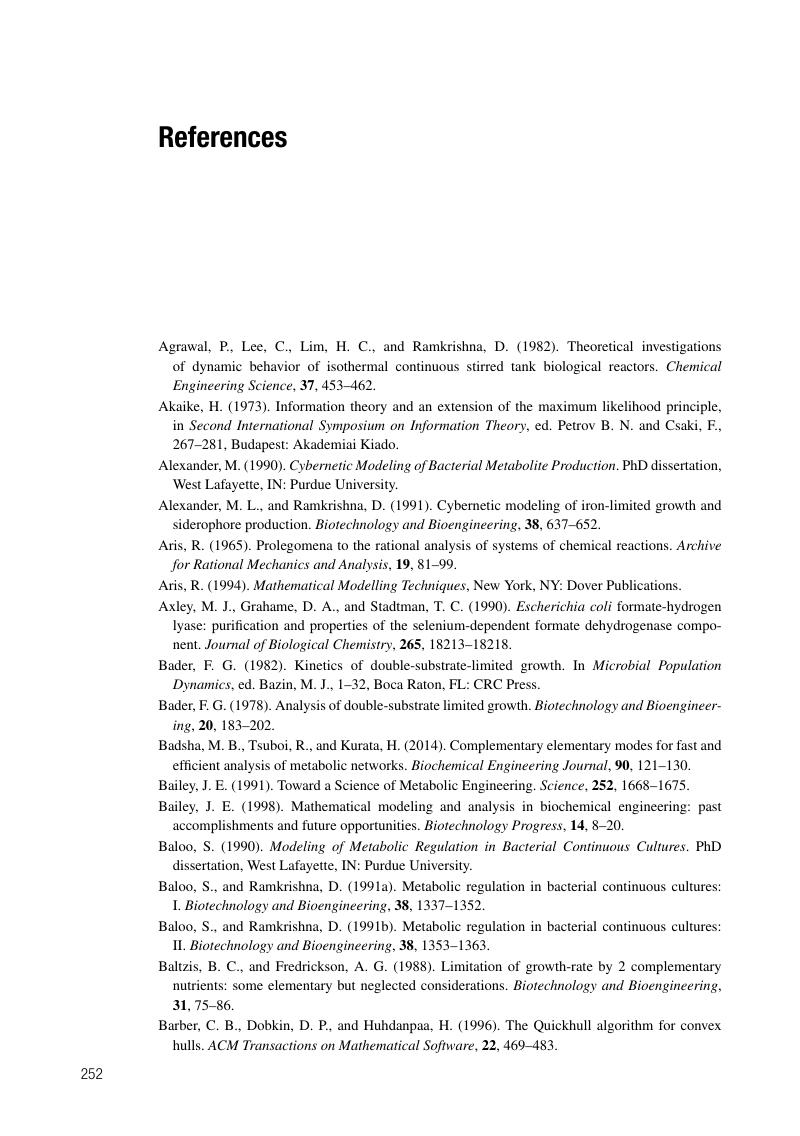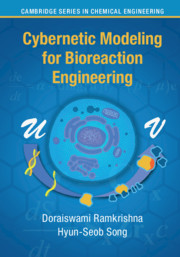Book contents
- Frontmatter
- Dedication
- Contents
- Preface
- General Notations
- 1 Introduction
- 2 Enzymatic Adaptation
- 3 Early Development of Cybernetic Models
- 4 Revisiting Cybernetic Laws via Optimal Control Theory
- 5 Toward Modeling of Metabolic Networks
- 6 The Hybrid Cybernetic Model (HCM)
- 7 The Lumped Hybrid Cybernetic Model (L-HCM)
- 8 Predicting Dynamic Behavior of Mutant Strains with L-HCM
- 9 Nonlinear Analysis of Cybernetic Models
- 10 Metabolic Modeling Landscape
- References
- Index
- References
References
Published online by Cambridge University Press: 29 September 2018
- Frontmatter
- Dedication
- Contents
- Preface
- General Notations
- 1 Introduction
- 2 Enzymatic Adaptation
- 3 Early Development of Cybernetic Models
- 4 Revisiting Cybernetic Laws via Optimal Control Theory
- 5 Toward Modeling of Metabolic Networks
- 6 The Hybrid Cybernetic Model (HCM)
- 7 The Lumped Hybrid Cybernetic Model (L-HCM)
- 8 Predicting Dynamic Behavior of Mutant Strains with L-HCM
- 9 Nonlinear Analysis of Cybernetic Models
- 10 Metabolic Modeling Landscape
- References
- Index
- References
Summary

- Type
- Chapter
- Information
- Cybernetic Modeling for Bioreaction Engineering , pp. 252 - 265Publisher: Cambridge University PressPrint publication year: 2018



